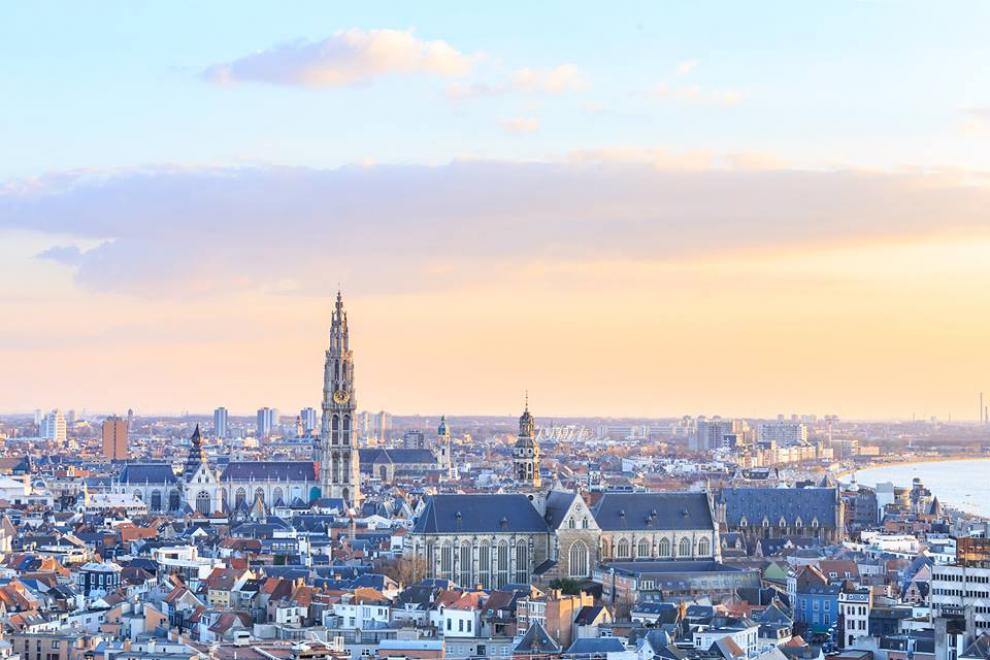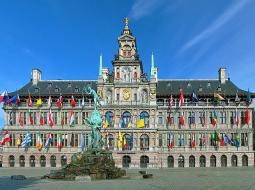Thessaloniki gets ready for its metro launch in November
The underground rapid transit lines have been under construction for almost two decades due to various project delays
 TheMayor.EU logo
TheMayor.EU logo 
Excavations have shown that Antwerp was inhabited as long ago as the Gallo-Roman period. The city appears to have grown up around two settlements: the 'aanwerp' (alluvial mound) from which it takes its name and Caloes.
The city first experienced an economic boom in the 12th century, when the rival port of Bruges started silting up. By the first half of the 14th century, Antwerp had become the most important trading and financial centre in Western Europe, its reputation based largely on its seaport and wool market.
In 1356, the city, which had been part of the Holy Roman Empire, was annexed to the County of Flanders and lost lots of its privileges, partly to Bruges' advantage. Fifty years later, the political and economic tide turned again and as the Golden Age unfolded, Antwerp became a world class metropolis, described as 'the loveliest city in the world'.
By the second half of the 16th century, the city was the focus of politico-religious struggles between the Protestant North and Catholic South (Spain), which led to the River Scheldt being closed. From an economic point of view, this was a disaster. Yet the city continued to flourish culturally until the mid-seventeenth century thanks to painters like Rubens, Anthony Van Dyck, Jordaens and Teniers, printers such as Plantin and Moretus, and the famous Antwerp harpsichord builders.
But from 1650 till the 19th century, Antwerp went into serious decline, as the Scheldt remained closed and the city became little more than a provincial town. It was only after the fall of Napoleon at Waterloo (1815) that Antwerp entered a short period of prosperity, which ended with the Belgian Revolution (1830) and once again the closure of the Scheldt. The river was finally reopened for good in 1863, paving the way for Antwerp to return to its former glory.
Apart from interruptions during the two world wars, Antwerp has experienced steady economic growth since the start of the 20th century and is now home to the second largest port in Europe, as well as the world hub for uncut diamonds.
Antwerp is the capital of Antwerp province in Flanders. With a population of 520,504 (November 2017), it is the most populous city proper in Belgium. Its metropolitan area houses around 1,200,000 people, coming in second behind Brussels.
Antwerp is on the River Scheldt, linked to the North Sea by the Westerschelde estuary. It is about 40 kilometres north of Brussels, and about 15 kilometres from the Dutch border.
Antwerp is the world's second most multi-cultural city (after Amsterdam) home to 170 nationalities.
The port of Antwerp is one of the biggest in the world and second in Europe. Importantly it handles high volumes of economically attractive general and project cargo, as well as bulk cargo. Antwerp's docklands, with 5 oil refineries, are home to a massive concentration of petrochemical industries. Elecricity generation is also an important activity, with 4 nuclear power plants at Doel, a conventional power station in Kallo, as well as several smaller combinet cycle plants. There is a wind farm in the northern part of the port area. The old Belgian bluestone guays bordering the Scheldt for a distance of 5.6 km to the north and south of the city centre have been retained for their sentimental value and are used mainly by cruise ships and short sea shipping.
Antwerp's other great mainstay is the diamond trade that takes place largely within the diamond district. The city has 4 diamond bourses. Since World War II families of the large Hasdic Jewish community have dominated Antwerp's diamond trading industry. Antwerp World Diamond Centre, the successor to the Hoge Raad voor Diamant, plays an important role in setting standards, regulating professional ethics, training and promoting the interests of Antwerp as the capital of the diamond industry.

Antwerp also known as the cultural capital of Flanders is an outstanding historic centre for Belgian craftwork and artistry. In the past the city was home to such famous artists as Rubens, van Dyck, and Jordaens. In the same time, centuries of prosperity have bequeathed an inheritance of architectural beauty, which includes the magnificent cathedral, the town hall, and many other historical buildings in the old town center.
Antwerp's excellent museums are a must-visit places. In particular, the city's paintings - an incomparable collection of 15th- to 17th-century masterpieces from a time when the work of artists of the South Netherlands school attained extraordinary heights - is a highlight of any visit.
Stad Antwerpen
Grote Markt 1
2000 Antwerpen